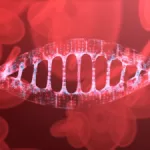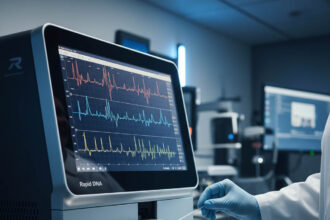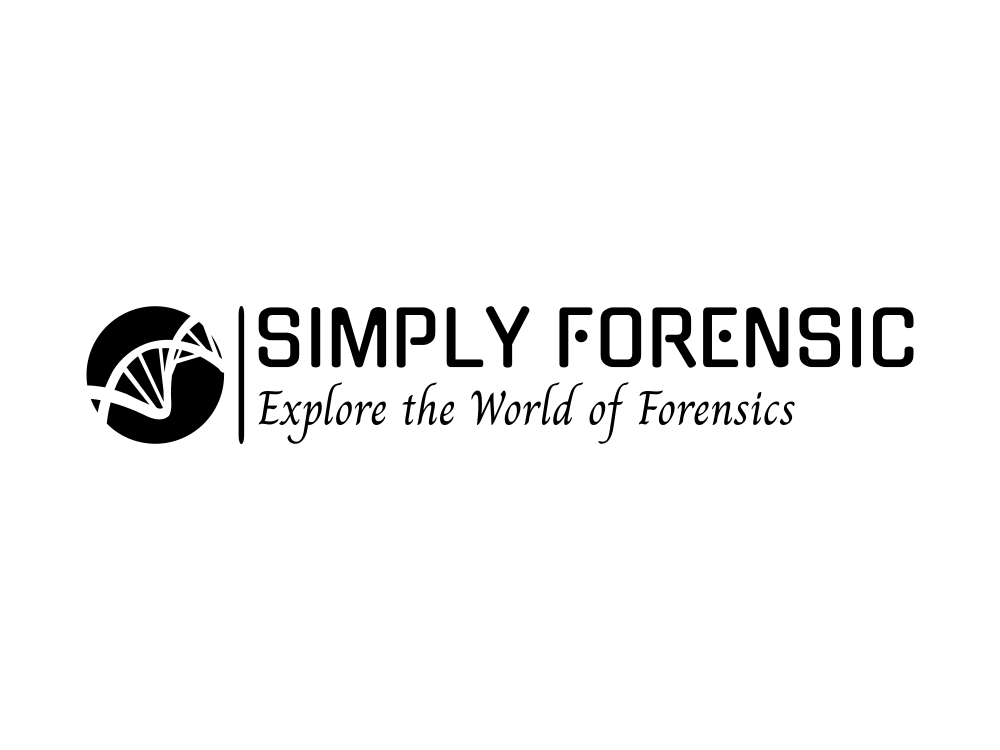Statistical Interpretation of DNA Results
Statistical analysis anchors DNA evidence interpretation in criminal courtrooms. Forensic scientists must quantify the significance of DNA DNA, or Deoxyribonucleic Acid, is the genetic material found in cells, composed of a double helix structure. It serves as the genetic blueprint for all living organisms. Read Full Definition profile matches to present compelling evidence
DNA, or Deoxyribonucleic Acid, is the genetic material found in cells, composed of a double helix structure. It serves as the genetic blueprint for all living organisms. Read Full Definition profile matches to present compelling evidence
- Statistical Interpretation of DNA Results
- Understanding Probability Calculations
- Likelihood Ratios: Assessing Evidentiary Strength
- Random Match Probability: Understanding DNA Rarity
- Core Components of DNA Statistical Analysis
- Why Probability Matters in DNA Evidence
- Population Genetics Basics
- Hardy-Weinberg Principle: The Cornerstone of Population Genetics
- Complexities of Genetic Diversity
- Implications for Forensic Investigations
- Explaining Statistics to Judges
- Likelihood Ratios: Interpreting DNA Evidence Strength
- Single-Source Samples and Random Match Probability
- Avoiding the “Prosecutor’s Fallacy”
- Strategies for Effective Communication
- Working with DNA Experts
- CODIS Database Utilization
Understanding Probability Calculations
DNA evidence interpretation rests on two fundamental statistical principles: likelihood ratios and random match probabilities. These concepts form the cornerstone of forensic DNA analysis and provide the mathematical framework for assessing the strength and significance of DNA evidence in a legal context.
Likelihood Ratios: Assessing Evidentiary Strength
A likelihood ratio (LR) quantifies how strongly the DNA evidence supports one hypothesis over another.
- When LR > 1: The evidence favors the prosecution’s hypothesis, suggesting that the DNA match is more likely under the assumption that the defendant is the contributor.
- When LR > 10,000: The evidence is considered exceptionally strong, overwhelmingly supporting the prosecution’s case [11].
This approach avoids absolute claims, focusing instead on the statistical likelihood, which is scientifically robust and less prone to misinterpretation.
Random Match Probability: Understanding DNA Rarity
The random match probability (RMP) estimates how often a specific DNA profile would appear in a random individual within the general population.
- A low RMP indicates a rare DNA profile, strengthening the argument that the evidence implicates the defendant.
- This measure highlights the uniqueness of DNA profiles, a critical factor in criminal cases.
Core Components of DNA Statistical Analysis
The field of DNA statistical interpretation encompasses several critical calculations, each contributing to the robust analysis of DNA evidence:
- Random Match Probability Formulas: These determine the likelihood that a specific DNA profile could occur randomly in a population.
- Likelihood Ratios for Single-Source Samples: These compare the probability of the evidence under two competing hypotheses (e.g., the DNA belongs to the defendant vs. it belongs to an unknown individual).
- Population FrequencyFrequency is a fundamental concept in physics and wave theory. It refers to the number of times a specific point on a wave, such as a crest or trough, passes a fixed reference point in Read Full Definition Calculations: These estimate the prevalence of specific genetic markers in various population groups, aiding in contextualizing DNA matches.
- Statistical Significance Measures: These assess whether the observed DNA match is statistically meaningful or could be due to random chance.
Why Probability Matters in DNA Evidence
Relying on statistical principles ensures a scientifically rigorous interpretation of DNA evidence. Likelihood ratios and random match probabilities allow forensic experts to convey the strength of DNA matches objectively, avoiding misleading conclusions. By presenting clear, mathematically grounded results, these calculations enhance the evidentiary value of DNA in legal proceedings.
Population Genetics Basics
Population genetics is a pivotal branch of biology that examines the genetic diversity within and between populations. Its role in forensic science
Hardy-Weinberg Principle: The Cornerstone of Population Genetics
At the heart of population genetics lies the Hardy-Weinberg principle, a fundamental concept used to calculate the expected frequencies of genotypes in a population under the assumption of genetic equilibrium. This principle provides a mathematical basis to predict genotype distributions based on alleleAlleles are different forms of a gene resulting from mutations or variations in the DNA sequence or gene expression. They can be dominant (expressed with one copy) or recessive (expressed only with two copies). Read Full Definition frequencies [12].
For forensic experts, the Hardy-Weinberg principle is indispensable. It allows for the estimation of DNA profile frequencies across diverse ethnic and racial groups, helping to establish the statistical weight of matches in forensic cases.
Complexities of Genetic Diversity
While the Hardy-Weinberg principle offers a foundational framework, calculating profile frequencies is far from straightforward. Accurate estimations require a nuanced understanding of:
Research underscores the inadequacy of using broad racial categories to capture the intricate complexity of genetic diversity. Simple racial classifications fail to reflect the nuanced genetic variations that exist within and between populations. For example:
Forensic scientists are adopting more sophisticated population genetics methods to address these challenges. These approaches:
These advanced techniques enhance the precision of DNA profile frequency estimations, reducing the risk of misinterpretation in forensic contexts. Forensic experts can better account for the true complexity of genetic diversity by moving beyond simplistic categorizations.
Implications for Forensic Investigations
Population genetics provides the statistical backbone for determining the rarity of DNA profiles. This is crucial for:
- Establishing the evidentiary value of a match in criminal cases.
- Supporting probabilistic analyses, such as likelihood ratios, that quantify the significance of forensic findings.
- Addressing challenges related to mixed profiles or partial matches, where population-specific data can improve accuracyIn scientific and measurement contexts, "accuracy" refers to the degree of proximity or closeness between a measured value and the true or actual value of the measured quantity. Accuracy indicates how well a measurement reflects Read Full Definition.
Explaining Statistics to Judges
Effectively conveying DNA evidence to juries or Judges is crucial to ensure justice. Research shows jurors/judges are more likely to be persuaded when statistical concepts are translated into clear, relatable terms [14]. Proper communication of DNA evidence enhances understanding and supports informed decision-making in the courtroom.
Likelihood Ratios: Interpreting DNA Evidence Strength
The strength of DNA evidence is often expressed using likelihood ratios (LR), which compare the probability of the evidence under two competing hypotheses. These ratios provide a standardized way to assess the weight of evidence. The scale of evidence strength is typically interpreted as follows [11]:
- Limited evidence: LR below 1-10
- Moderate evidence: LR 10-100
- Moderately strong evidence: LR 100-1000
- Strong evidence: LR 1000-10,000
- Very strong evidence: LR above 10,000
These categories help jurors understand how compelling the DNA evidence is in the case context.
Single-Source Samples and Random Match Probability
For single-source DNA samples, likelihood ratios often correlate with random match probability (RMP)—the chance that a random individual’s DNA profile would match the evidence. For instance, an LR of 10,000 indicates a one-in-10,000 chance that the DNA profile belongs to someone other than the suspect. This comparison reinforces the statistical robustness of DNA evidence while maintaining scientific accuracy [11].
Statistics like exclusion probabilities or the percentage of the population excluded as contributors also play a vital role in mixture interpretations. Studies show that for complex mixtures, up to 99.99952% of the population can be ruled out, which helps strengthen the evidence’s reliability [15].
Avoiding the “Prosecutor’s Fallacy”
A critical pitfall in presenting DNA statistics is the “prosecutor’s fallacy,” which occurs when random match probability is incorrectly equated with the likelihood that the defendant is guilty. For example, stating, “There’s only a one-in-a-million chance the DNA belongs to someone else” can mislead jurors into thinking guilt is nearly certain.
Instead, expert testimony should focus on comparative likelihoods, such as:
- Scenario 1: The DNA belongs to the defendant.
- Scenario 2: The DNA belongs to an unknown person.
This balanced approach promotes fair interpretation of the evidence, aligning with the principles of scientific and legal integrity [16].
Strategies for Effective Communication
To enhance jury comprehension, expert witnesses should:
- Use clear analogies: Translate probabilities into everyday examples, such as lottery odds or population sizes, to contextualize statistical significance.
- Visual aids: Provide charts, graphs, or infographics that simplify complex data and make statistical strength more tangible.
- Avoid jargon: Replace technical terms with accessible language, ensuring jurors grasp key concepts without confusion.
- Connect evidence to the case narrative: Highlight how the DNA evidence aligns with other case elements, offering a cohesive story.
Effective presentation of DNA statistics ensures jurors can accurately weigh the evidence’s significance. Expert witnesses are pivotal in fostering informed deliberations by avoiding pitfalls like the prosecutor’s fallacy and emphasizing understandable comparisons. Through clear communication and relatable examples, DNA evidence retains its integrity while aiding the pursuit of justice.
Working with DNA Experts
DNA evidence demands skilled expert witnesses who excel both in scientific analysis and courtroom communication. Their selection, preparation, and management shape the foundation of successful DNA prosecutions.
Selecting Qualified Expert Witnesses
The foundation of an effective DNA prosecution rests on choosing experts who combine scientific expertise with the ability to articulate complex findings clearly. Characteristics of qualified DNA analysts include:
- Comprehensive Training: Advanced training in forensic DNA analysis, including specialized courses in modern methodologies such as STR analysis, mtDNA sequencing, and Rapid DNA systems.
- Practical Experience: Extensive hands-on experience in handling forensic DNA cases, ranging from sample extraction to interpretation of mixed DNA profiles.
- Laboratory Proficiency: Deep familiarity with laboratory procedures and adherence to internationally recognized standards, such as ISO/IEC 17025.
- Legal Acumen: Demonstrated success in courtroom testimony, showcasing the ability to convey scientific findings effectively to lay audiences.
The vetting process should include reviewing the expert’s certificationCertification is a process through which a scientist can demonstrate their knowledge and competence in a particular field or in performing specific assays. It involves meeting established standards and requirements set by a certifying body. Read Full Definition (e.g., ASCLD-LAB accreditationAccreditation – a process by which a laboratory must prove to an accrediting agency that their processes, equipment, and employees are competent, credible, and accurate. The accrediting agency will inspect the laboratory and observe its Read Full Definition), proficiency testIn the context of laboratory and forensic testing, a proficiency test is used to evaluate a laboratory's competence and accuracy in conducting specific testing procedures. It involves the analysis of samples provided by a proficiency Read Full Definition performance records, and previous courtroom experiences.
Preparing Experts for Testimony
Proper preparation ensures expert testimony is clear, credible, and resilient against defense challenges. Best practices include:
- In-Depth Technical Analysis: Experts should thoroughly analyze DNA evidence, focusing on key findings and potential limitations.
- Calibrating Testimony Details: Tailoring the level of detail to suit both the scientific rigor required by the court and the comprehension level of the jury.
- Identifying Weaknesses: A candid assessment of any potential vulnerabilities in the testing methods or results, coupled with strategies to address them effectively.
- Simplifying Complex Concepts: Developing analogies or visuals to explain DNA-related processes, such as statistical probabilities or allele matching.
Pre-Trial Conferences: Collaborative sessions between prosecutors and experts are essential to aligning on key messages, anticipating cross-examination strategies, and clarifying technical aspects such as the chain of custodyChain of custody - The process used to maintain and document the chronological history of the evidence. Documents record the individual who collects the evidence and each person or agency that subsequently takes custody of Read Full Definition and statistical interpretation [18].
CODIS Database Utilization
The FBI’s Combined DNA Index System (CODIS) stands as the digital backbone of modern forensic DNA investigations. This sophisticated database system empowers prosecutors to unlock connections between cases and suspects through systematic DNA profile comparisons.
Accessing CODIS Resources
CODIS architecture spans three tiers – local, state, and national databases. FBI records from February 2001 reveal the national database’s scope: 23,301 forensic profiles alongside 492,227 convicted offender profiles [1]. Four primary access points serve law enforcement needs:
- State index laboratories (one per state)
- Local index laboratories (62 nationwide)
- FBI laboratory in Washington, D.C.
- U.S. Army laboratory in Forest Park, Georgia
DNA profiles flow upward through this hierarchy, triggering automatic comparisons at each level. When matches surface, the system immediately alerts relevant laboratories.
Understanding Database Limitations
CODIS power comes with clear boundaries. Prosecutors must recognize these key constraints:
- Nature’s destructive forces – heat, sunlight, bacteria, and mold threaten DNA evidence integrity [2]
- Timing limitations – profiles cannot pinpoint when DNA reached a crime scene [2]
- Twin challenges – identical twins share matching DNA profiles [2]
- Family connections – related individuals show greater DNA similarities than strangers [2]
Profile completeness also shapes CODIS effectiveness. Missing genetic markers may disqualify profiles from certain database searches, limiting their investigative reach.
Cold Case Applications
CODIS shines brightest when illuminating cold cases. The system’s ability to bridge time gaps between crimes and identify long-hidden suspects has brought closure to countless families. One striking success unfolded in May 2000, when CODIS connected DNA from a 1977 Reno murder victim’s clothing to a convicted sex offender’s profile, securing a guilty plea decades later [1].
The system excels at:
- Weaving connections between unsolved cases
- Unveiling suspects in historical crimes
- Bridging past and present investigations
- Clearing wrongly suspected individuals
FBI data confirms CODIS’s impact on cold case resolution, with 1,733 aided investigations by February 2001 [1]. Yet success hinges on database depth and breadth. State laws create varying requirements for DNA collection. Virginia demands samples from all convicted felons, while Kentucky focuses solely on sex offenders [1].
CODIS continues its evolution, expanding capacityThe amount of finished product that could be produced, either in one batch or over a defined period of time, and given a set list of variables. Read Full Definition while accelerating searches. These advances sharpen prosecutors’ DNA evidence capabilities, though mastery of system strengths and limitations remains essential for success.












